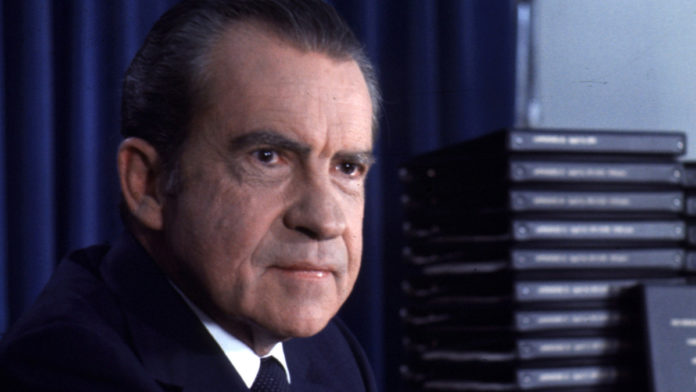It’s sad.
Word is, when President Nixon signed the War on Cancer law, he really thought curing humanity’s most feared disease would be part of his historical legacy.
Unfortunately for cancer patients, however, he was so anti-marijuana he didn’t realize cannabis is our greatest friend in the war on cancer.
Yet he also signed the bill making marijuana a Schedule I Controlled Substance. That meant the government claimed marijuana had no legitimate medical uses.
So it made scientific research into cannabis very difficult. To this day, even in the 33 states that allow for medical marijuana, doctors cannot prescribe it. They can only certify a patient’s need for it.
That’s true even though we’ve known of marijuana’s effectiveness since 1986. That’s when an isomer of delta-9-tetrahydrocannabinol (THC) – cannabis’s active ingredient – was approved to help reduce nausea and vomiting in cancer patients undergoing chemotherapy. Clinical trials proved THC worked as well or better as any of the other pharmaceutical drugs.
Cannabis also helps reduce pain in cancer patients. It prevents neuropathy – and it allows them to sleep more and better during the night.
What is Cannabis?
In the United States, according to law, it’s the cannabis sativa plant with more than 0.3% THC.
Cannabis does get confused with hemp. That’s cannabis sativa with under 0.3% THC. Hemp has played a highly significant role in human history, because it’s been used to make rope and sails.
Last year, the United States Congress removed the federal ban on hemp. This frees American farmers to make money by growing hemp, and one use for hemp is to make CBD oil.
The Pain Blocking Power of Cannabis
The plant contains around 500 compounds, of which 100 are cannabinoids. The two most well-known active cannabinoids are THC and cannabidiol (CBD).
THC is the psychoactive compound, and CBD is more effective at relieving pain.
Maybe you’re already taking opioids for pain. One study gave patients who were already on prescription pain killers cannabis in addition. The two drugs reacted synergistically, relieving pain more than twice as much as either drug by itself.
Those people experienced a 20-34% drop in their pain levels.
One joint contains about 8-10 milligrams of THC. That’s equivalent to 60 milligrams of codeine. As a single dose of codeine, that gives a patient strong pain relief.
One joint is the equivalent of 8 milligrams of morphine, the strongest pain reliever. The starting dose of morphine is 15 milligrams, so the THC is nearly twice as effective by weight.
Keep in mind: both codeine and morphine are opioids. With them, addiction is a real danger. That’s why cannabis is such a great alternative, because it’s not addictive.
Other Benefits of Cannabis vs. Cancer
Nausea is a common side effect of receiving chemotherapy for cancer. In a study pitting cannabis against Zofran, cannabis performed as well as the drug or better.
Another useful cannabinoid is THCV, which protects you from nerve damage from chemotherapy.
One study showed CBD prevents tumors from becoming tolerant of chemotherapy. Therefore, it makes chemo more effective at killing the tumor.
How to Take Cannabis
The majority of medical marijuana products are taken orally. You feel the effects in about 45 minutes to an hour.
If you choose to inhale or vape, the effect begins within 10 minutes. However, if you have any kind of lung disease, you should take cannabis orally because when you inhale, you do get particulates that can inflame your lungs.
You may also use cannabis in the form of a salve. Rub it on your skin, and it goes in to relieve pain and neuropathy.
The Endocannabinoid System of Your Body
One component of our endocannabinoid system is anandamide, and it’s like a watchdog against cancer. When working well, therefore, your endocannabinoid system promotes anti-cancer activities inside you. This includes boosting your immune system’s killer cells to find and destroy cancerous cells. Also, your body signals cancer cells, telling them kill themselves. And it uses autophagy. That’s the process of killing cancer cells and recycling what they’re made of.
THC and CBD fit into your body’s endocannabinoid receptors. By taking in cannabinoids from cannabis, you’re pumping up your body’s natural endocannabinoid system so it fights back against any cancerous cells in your body.
Does Cannabis Cure Cancer?
Dr. Allan Frankel is a well known “cancer doctor.” He treats many patients in California with cannabis. He says many patients do see tumors shrink, but he cannot guarantee a permanent “cure.”
At this time, nobody can say cannabis will permanently get rid of your cancer. But, of course, that’s just as true of surgery, chemotherapy or radiation.
I believe that when scientists are able to run large clinical trials, medical science will learn cannabis plays a role, along with many other factors and healthy compounds, in directly managing cancer, as well as its side effects.
Therefore, do work with the best medical advice you can find. Cannabis is helpful in many ways, but is not a magic cure.
Surviving cancer demands massive action – do anything and everything that could help you.
Warning: Although many states have legalized cannabis for medical use, in 17, it remains totally illegal. If you’re in one of those states, avoid it. Or move to a place where it’s legal.
CBD oil is legal is every state except South Dakota, Idaho, and Nebraska.








